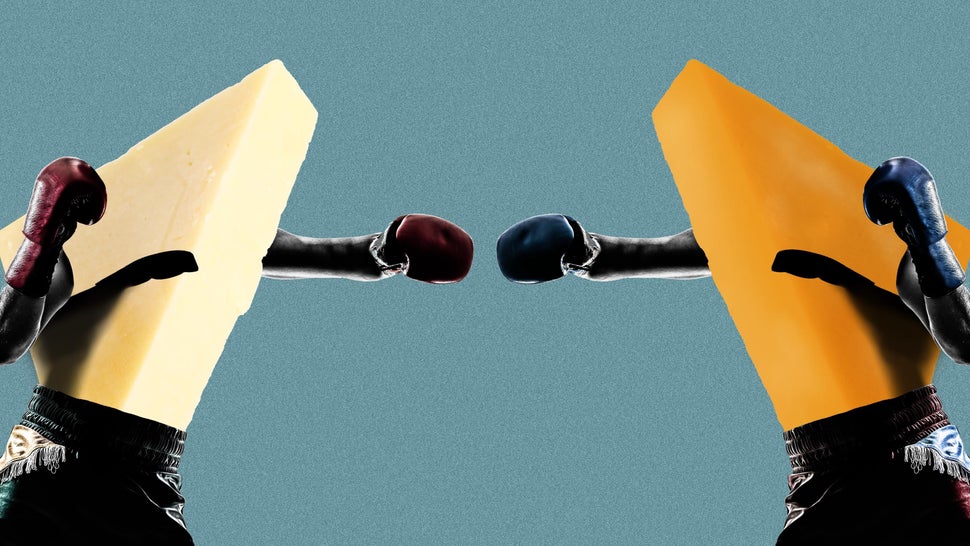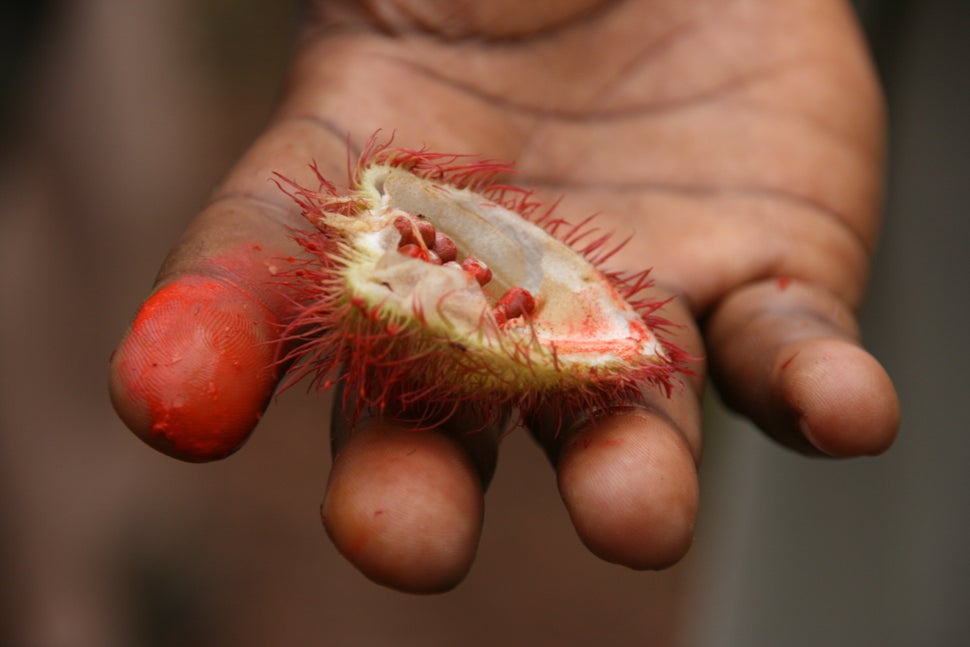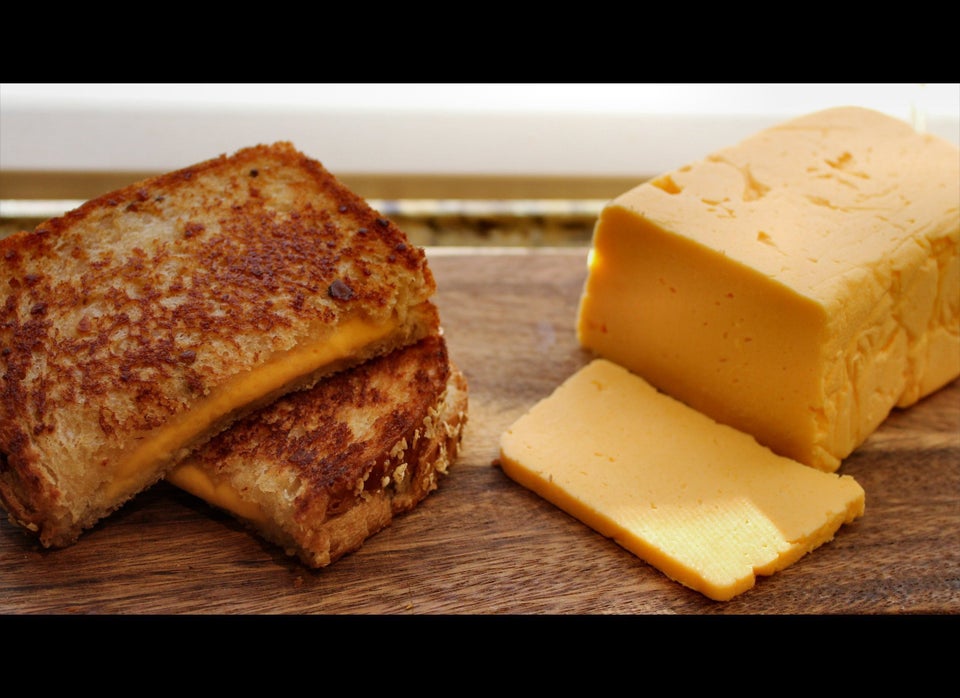
Americans love cheese, and we’re eating more of it than ever: about 37 pounds per year per capita, in fact, more than double what we ate four decades ago, according to the U.S. Department of Agriculture.
A large chunk of our cheese eating is made up of cheddar cheese, which has been a favorite for decades. Cheddar is a versatile cheese that comes in many varieties, and one of the most noticeable differences from one cheddar to another is color ― some are white, while others are orange.
Cheese eaters may have a preference for white vs. orange cheddar, but what exactly is the difference between the two?
The simple answer, cheesemongers say, is that orange cheddar has color added, but there’s a lot more to it. We asked experts to weigh in on why some cheddar cheeses are dyed, whether color affects taste, how to shop for the best cheddar to meet your needs and whether one is healthier than the other.
Why is orange cheddar dyed?
Cheddar cheese is made via a process called “cheddaring,” in which curds are formed into loaves, which are stacked on top of one another to remove excess whey. The process of cutting and stacking curds is repeated over and over, giving the cheese a crumbly and layered texture after it has aged.
To make orange cheddar, Josh Windsor, assistant caves manager at Murray’s Cheese, said many cheesemakers color the cheese, usually with annatto, a food coloring derived from the seeds of the tropical achiote tree native to the Americas.

The most common theory for why some cheddar is dyed at all, he said, is that the added color gives cow’s milk cheese, like cheddar, a consistent look throughout the year.
Pastures where cows graze are full of green grasses that are rich in beta carotene, the red-orange pigment found in many plants. Cows’ bodies do little with the beta carotene, so it eventually ends up in the milk, Windsor explains.
“The milk itself will still appear white due to the way the butterfat in milk scatters light,” he said. “However, if you make butter or cheese from that milk, the resulting product will appear more yellow or orange when the cow had been feeding on more green, leafy pasture.”
Most cows are pasture-fed in the summer and given hay in the winter, making the butter or cheese made from their milk appear paler in color in the warmer months. By adding annatto, cheesemakers keep control over the color.
Many people believe adding color to cheddar cheese is a recent phenomenon, but it’s been a part of cheese-making for centuries, said Brian Gilbert, head cheesemonger at Beecher’s Handmade Cheese.
Before achiote seeds were available in Europe, cheesemakers used marigold petals to color cheeses and make them look more “vibrant and rich,” especially when cows fed on silage or fermented grain, which gave cheeses a paler hue, he said.
Does the dye in cheddar affect the flavor?
Gilbert said coloring does not affect the flavor of the cheddar, but he suggests people likely have a preference or emotional response to white vs. orange cheddar.
“We are undoubtedly influenced by the colors of the food we eat, even if they don’t technically change the physical taste of it,” he said.
Factors that do influence the taste of cheese include the milk used, as well as the length and style of aging. A cheddar cheese will have a more pronounced flavor the longer it’s aged, Gilbert said.
While annatto is the most common dye used for cheddar, according to the Code of Federal Regulations, the governing body for U.S. cheese manufacturing, Windsor said any “harmless, food-safe coloring may be used.”
“Annatto is not flavorless,” he said, describing it as “a little piquant, almost peppery.”
However, it is an “extremely efficient food dye,” so very little is needed to color cheese, Windsor said. “If annatto is adding flavor to the cheddar, I certainly can’t taste the difference.”
Which cheddar should you choose?
When shopping for cheddar cheese, there are many factors to consider besides its color, such as how long it has been aged and how you plan to use it.
But if you’re deciding between white vs. orange, it’s a personal preference, said Chris Scott, a chef at the Institute of Culinary Education. The cheese’s aging, not the color, affects its snacking or cooking properties. But here are some general rules you can follow:
For higher-quality cheddar ― the type that you’d eat on a cheese plate ― Gilbert suggests skipping the grocery store’s dairy aisle and heading to the cheese case or a specialty cheese shop. He also recommends looking for cheddars with a rind and “little white specks” on the surface ― a sign it was aged and will have a more complex, robust flavor.
Block cheddars, which do not have a rind and are usually sold in square or rectangular blocks, have a more uniform flavor and color, and are often good cooking cheeses, Windsor said ― think macaroni and cheese.
Young cheeses, or those not aged or only slightly aged, in both orange and white colors are often found in the dairy aisle at a typical grocery store. They tend to be inexpensive, mild-flavored and have a creamy texture, Scott said.
Which is healthier, orange or white cheddar?
Health-wise, there’s no difference between orange and white cheddar cheese, said Rahaf Al Bochi, an Atlanta-based registered dietitian nutritionist and media spokesperson for the Academy of Nutrition and Dietetics.
Cheese in general is rich in protein, calcium and vitamins A and B12. Cheddar also contains probiotics, which promote gut health, she explained. For example, 1 ounce of cheddar offers 7 grams of protein and about 20 percent of the daily value of calcium.
One downside is that cheddar contains saturated fat. Al Bochi recommends eating it in moderation and said choosing a low-fat cheese is not necessarily the healthier option.
“I think there is merit to choosing a high-fat cheese because it does provide the satisfaction factor, which is really important,” she said.
Al Bochi also suggests buying cheddar as a block rather than pre-shredded, which may be more convenient but may contain additives (or even sawdust) to keep it from clumping.
“You’re usually getting some better taste profiles if you just get the full chunk and shred it or slice it yourself,” she said.
